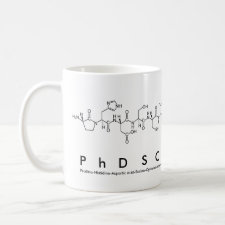
Authors: Goyal G, Bhakta S, Mishra P
Article Title: Surface Molecularly Imprinted Biomimetic Magnetic Nanoparticles for Enantioseparation.
Publication date: 2019
Journal: ACS Applied Nano Materials
Volume: 2
Issue: (10)
Page numbers: 6747-6756.
DOI: 10.1021/acsanm.9b01649
Abstract: A cost-effective and robust biomimetic magnetic nanomaterial based on surface molecular imprinting similar to antibody-like biorecognition sites for chiral drug molecules has been demonstrated. The importance of separation of chiral drugs has been recognized because one of the enantiomers often causes undesirable side effects. In this article, we have imprinted (S)-naproxen, a nonsteroidal antiinflammatory drug that is used to treat pain, inflammation, and fever, using surface imprinting on magnetic nanoparticles. Acrylamide and ethylene glycol dimethacrylate were copolymerized in the presence of (S)-naproxen on silica-coated iron oxide nanoparticles and characterized by dynamic light scattering, X-ray diffraction, alternating gradient field magnetometry, Fourier transform infrared spectroscopy, and transmission electron microscopy. An impressive maximum binding capacity of the polymer was found to be 127 mg/g of polymer with a notable imprinting factor of 12.88. These highly selective molecularly imprinted magnetic (MIPnap) nanoparticles were used to separate (S)-naproxen from (R)-naproxen with 4.1 times more affinity for (S)-naproxen. Similarly, it had more affinity for naproxen than other chemically similar drugs such as ibuprofen (2-[4-(2-methylpropyl)phenyl]propanoic acid) and ketoprofen [2-(3-benzoylphenyl)propionic acid]. Optical activity studies also confirmed selective isolation of (S)-naproxen from the corresponding racemic mixtures. Extraction of solution from the (R,S)-naproxen mixture resulted in the presence of predominantly (R)-naproxen in which the optical rotation was -0.655 with an impressive 52% enantiomer excess (ee) value. The MIPnap gave reproducible (S)-naproxen isolation at ~110 mg/g for six repetitive uses with minimal loss of activity. Besides, the average cost for each batch of synthesis is just ~$2.00, and considering the reusability, it is ~30 cents per use of this material. Thus, this method provides an alternative strategy and could be potentially useful for any important chiral drug separation by replacing the existing nonspecific method using chiral columns without much trial
Template and target information: (S)-naproxen, naproxen
Author keywords: surface molecular imprinting, chiral separation, biomimetic magnetic nanoparticles, (S)-naproxen, Reusability



Join the Society for Molecular Imprinting

New items RSS feed
Sign-up for e-mail updates:
Choose between receiving an occasional newsletter or more frequent e-mail alerts.
Click here to go to the sign-up page.
Is your name elemental or peptidic? Enter your name and find out by clicking either of the buttons below!
Other products you may like:
 MIPdatabase
MIPdatabase









